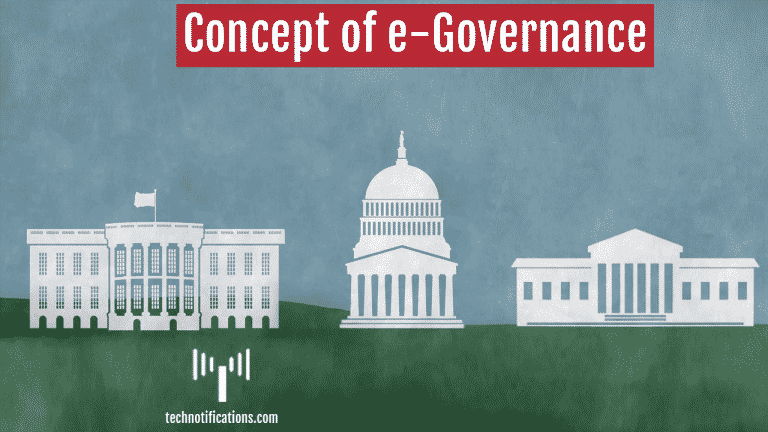Due to the rapid rise of the internet and digitalization, governments from all over the world are putting their efforts to involve IT in all the governmental processes. E-Governance can be defined as the communication and information technology for providing government services, exchange of information, transactions, integration of previously existing services, and information portals.
E-Governance is the technology-driven government system that enables citizens to access government information and services by visiting the appropriate websites on the Internet. E-Governance service delivery models are government-to-citizen (G2C), government-to-business (G2B), government-to-employee (G2E), and government-to-government (G2G).
In short, E-governance is the use of Information Technology for delivering relevant government information and services efficiently and transparently to citizens, businesses, and other arms of government for wider participation in a representative democracy.
E-governance is the best use of information and communication technologies to change and improve the consistency, productivity, efficiency, transparency, and accountability of information exchange and transnational agencies (refers to international or international non-governmental organizations) within government, between government agencies at different levels, people and businesses.
In general, E-Governance uses information and communication technology at the government and public sector levels to improve governance capacity and quality. Theoretical studies suggest that e-governance is the process of changing the relationship of the government with the government sectors, citizens, businesses, and among its own agencies, through the use of information and communication technologies tools.
The Elements of E-Governance are: Government, Citizens, and Businesses
Advantages of e-Governance
- It is Convenient and User-Friendly, Technologies (such as the Internet and mobile phones) have made communications faster, and facilitate better communications between governments and businesses. Digital information can move instantly from one office to another, without the need to wait for paper documents.
- Technology makes communication swifter. Internet, smartphones have enables the instant transmission of high volumes of data all over the world.
- Fast, Efficient, and cheaper communications.
- The use of ICT makes communication cheaper by saving the costs of stationary maintenance of paper documents, manpower, etc.
- Online posting of all official policies, legislation, information, and statistics guarantees a high level of transparency and eliminates all bureaucratic tendencies to conceal information.
- Transparency in all government processes automatically makes the bureaucracy more accountable, which is the main demand of citizens towards better governance.
Disadvantages of e-Governance:
- The main disadvantage of e-governance is the loss of interpersonal communication. Interpersonal communication is an aspect of communication that many people consider vital.
- Moving countrywide paper and documented data (both old and new) into electronic media is itself an uphill task, especially in a vast nation like India and China. Government retention and retrieval of transaction history will also require huge resources.
- In a developing nation like India and China, establishing an efficient e-governance system involves a huge investment in costly infrastructure. All public sector agencies at all levels will need Internet-enabled computer systems and servers to cope with vast amounts of information and cyber threats.
- E-governance websites are prone to malicious attacks from hackers and malware. They endanger the citizens’ personal data such as name, age, address, bank details, etc. Government agencies need to protect their systems from complex cyber threats.
- E-governance, like many technology-based services, is prone to technical problems from hardware failure, power outage, slow or no connectivity, etc. Literacy of the users and their ability to use the computer can limit the implementation of E-governance.
- The system loses the person-to-person interaction which is valued by many people.
So this article was quick to guide the concept of E-governance and its advantages and disadvantages. We hope this article helped you with such a topic, make sure you comment and share your views.

